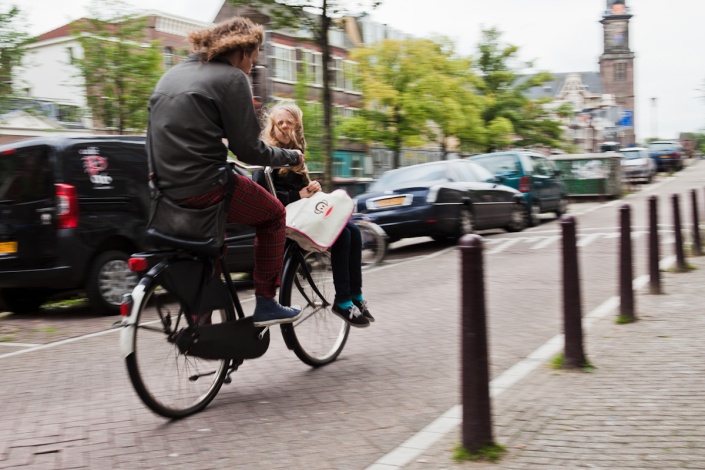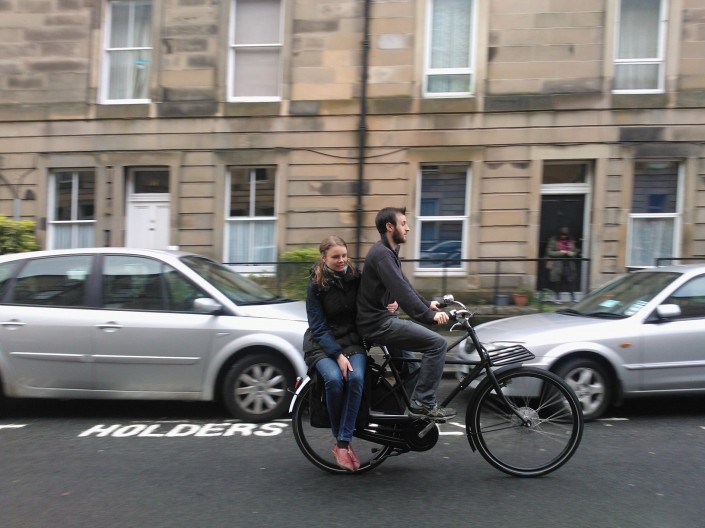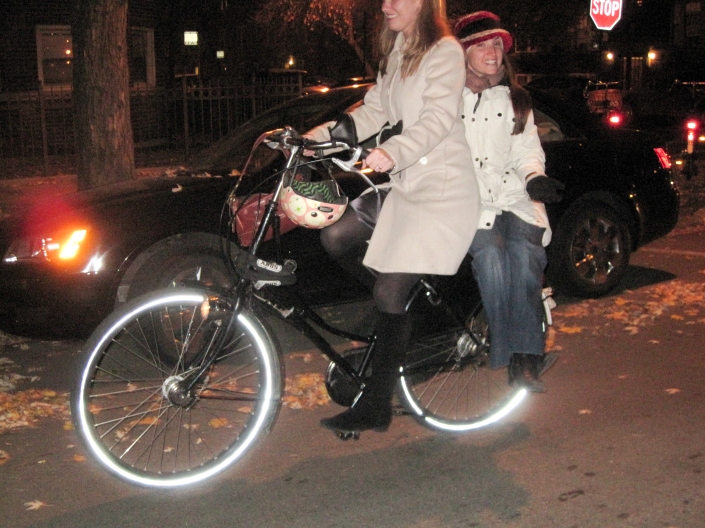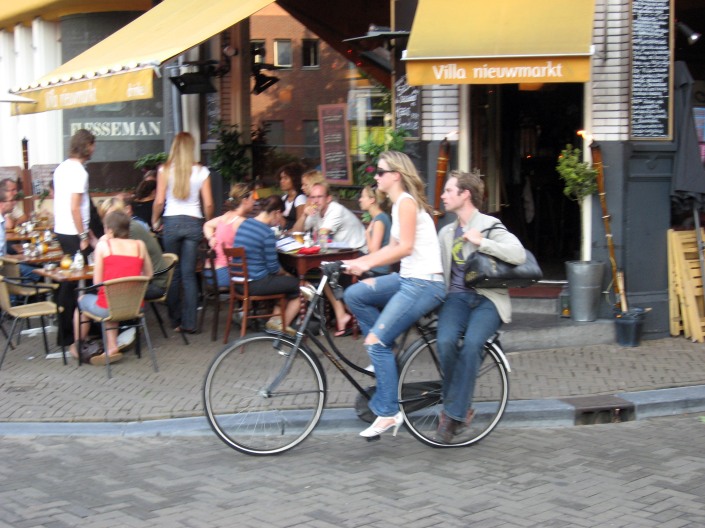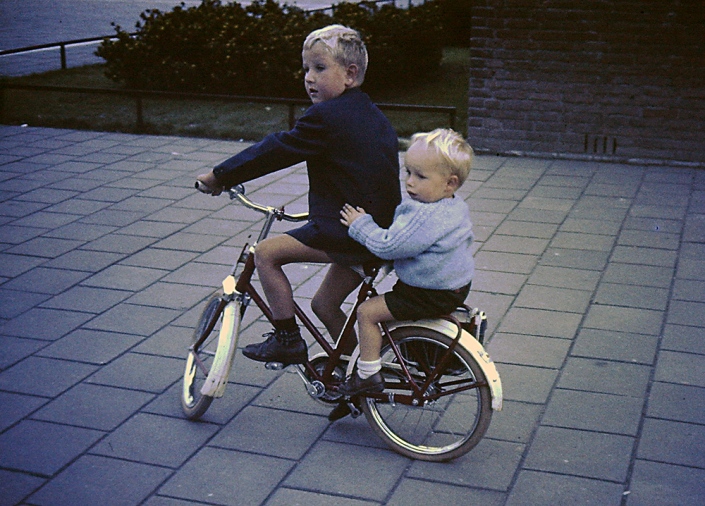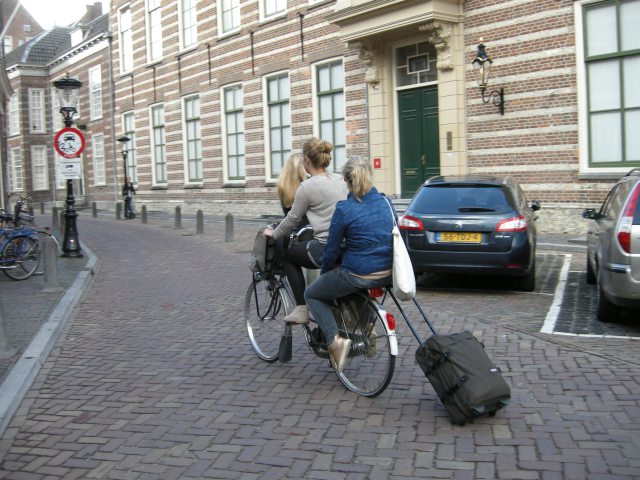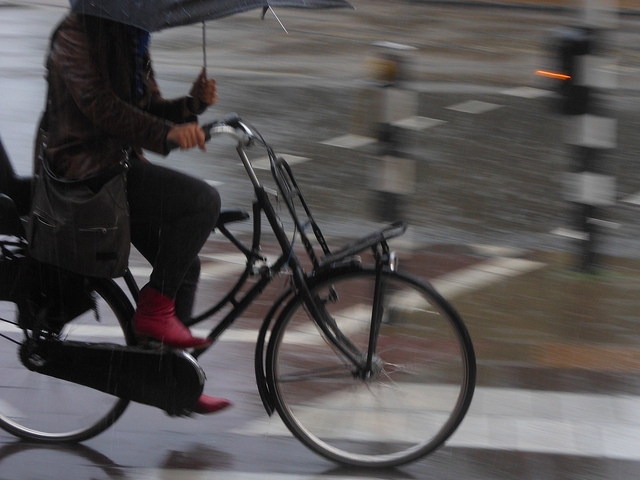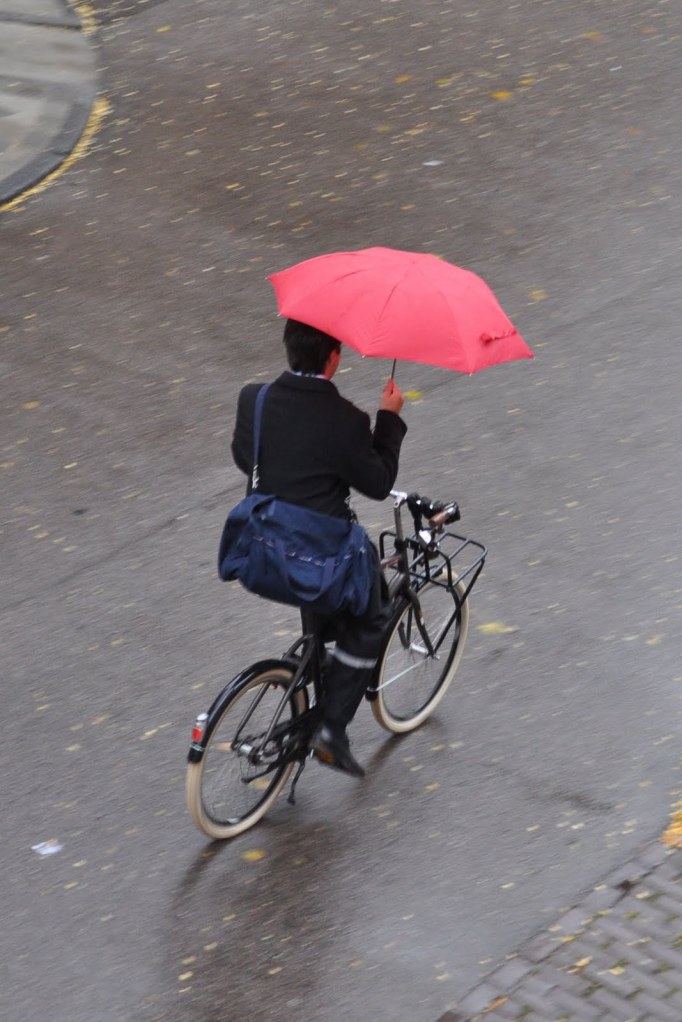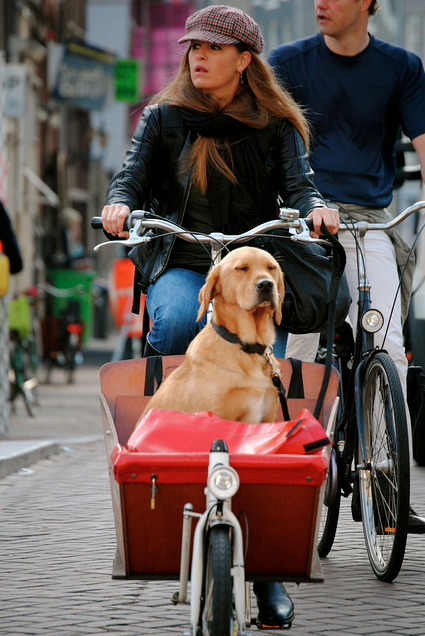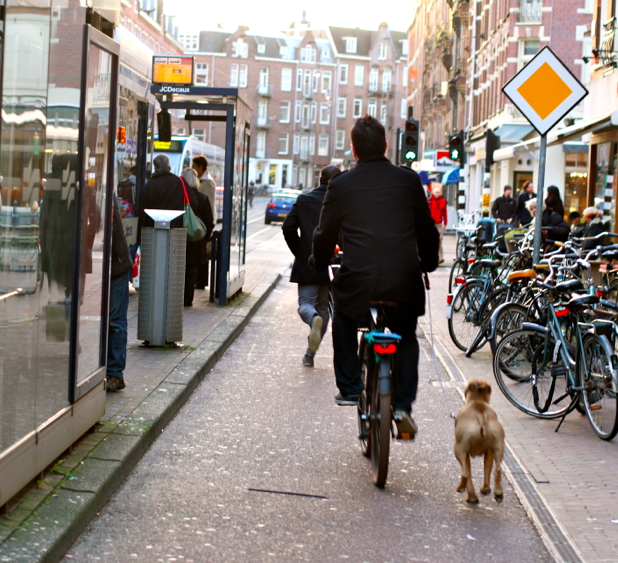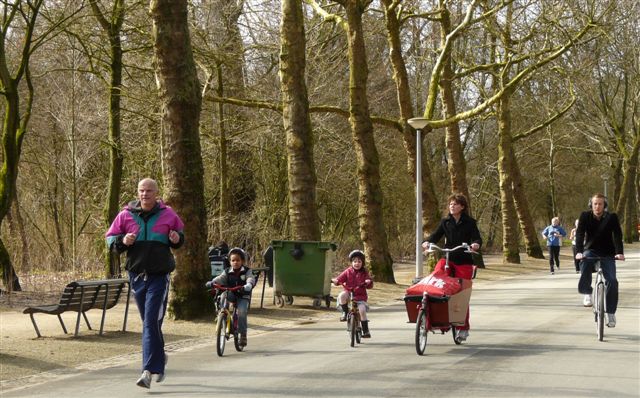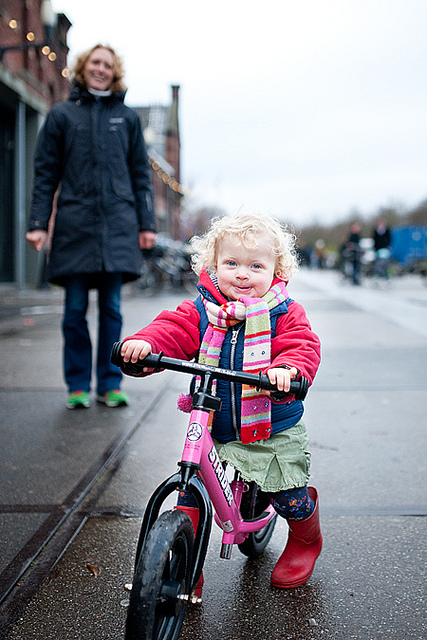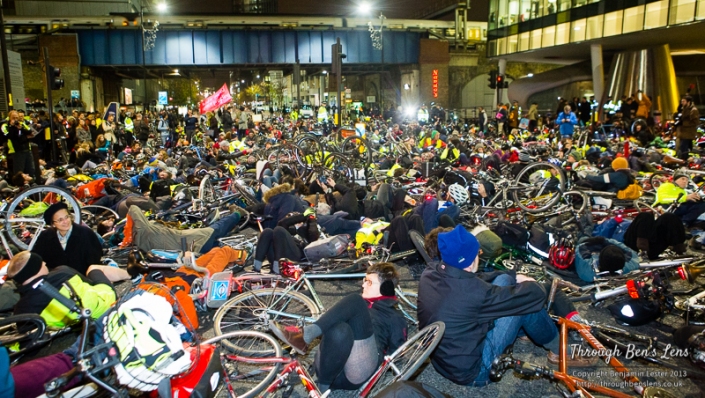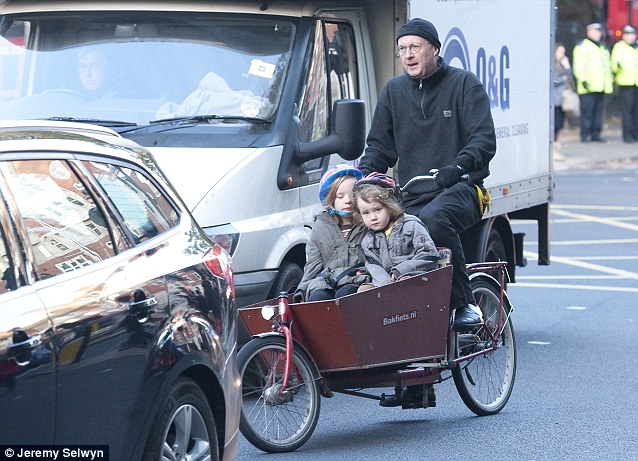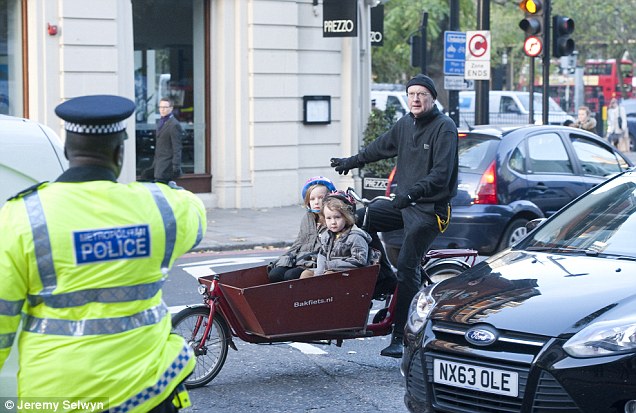London
Recent Road Ride for Charity
I haven’t given this blog much time or attention in recent months. There are a number of reasons for this, but one of them is that I was in training for a 100mile charity sportive. The Prudential RideLondon Surrey-100 is a unique event that sees some 20,000 amateur participants cycle around the Olympic course.
I was invited to take part in this event by a friend at PAC, a fantastic charity that specialises in providing innovative and high quality adoption support services. My fundraising target was set at £1000, and I still have some way to go if I am to achieve this. My fundraising page can be found here, and will shortly include a full ride report. The reason for this blog post is to hopefully get the word out there, and maybe attract a few new sponsors 🙂
Here is my story, illustrated by pictures from beginning to end:
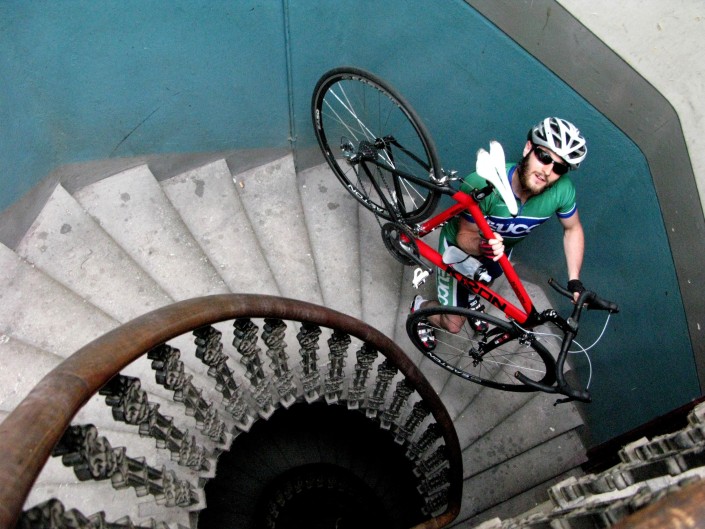
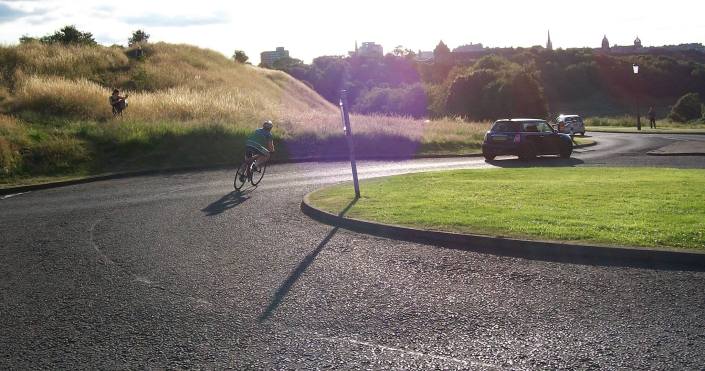
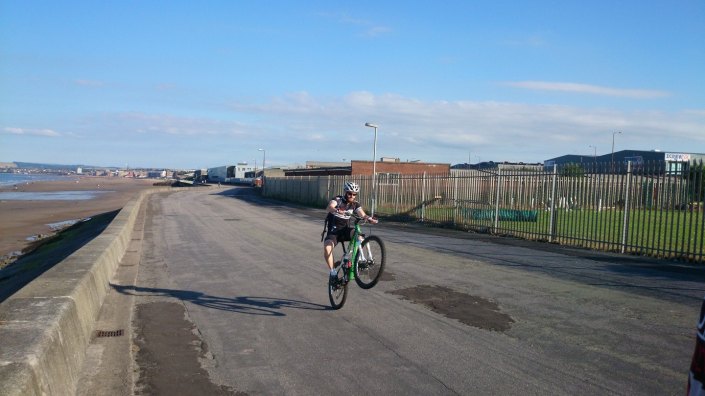


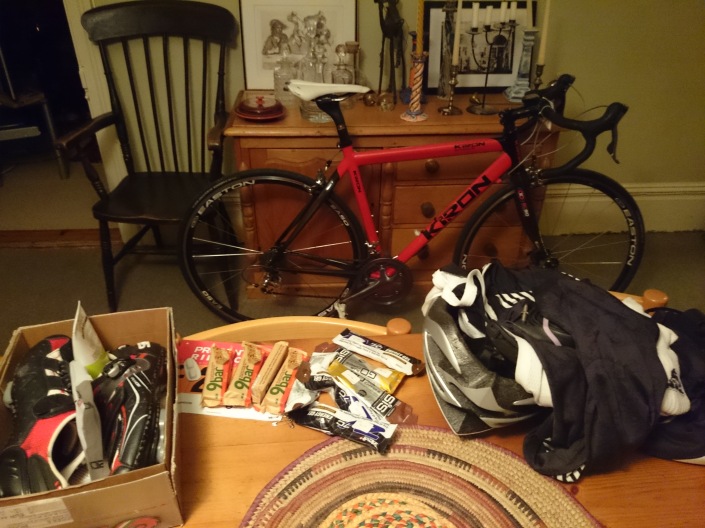

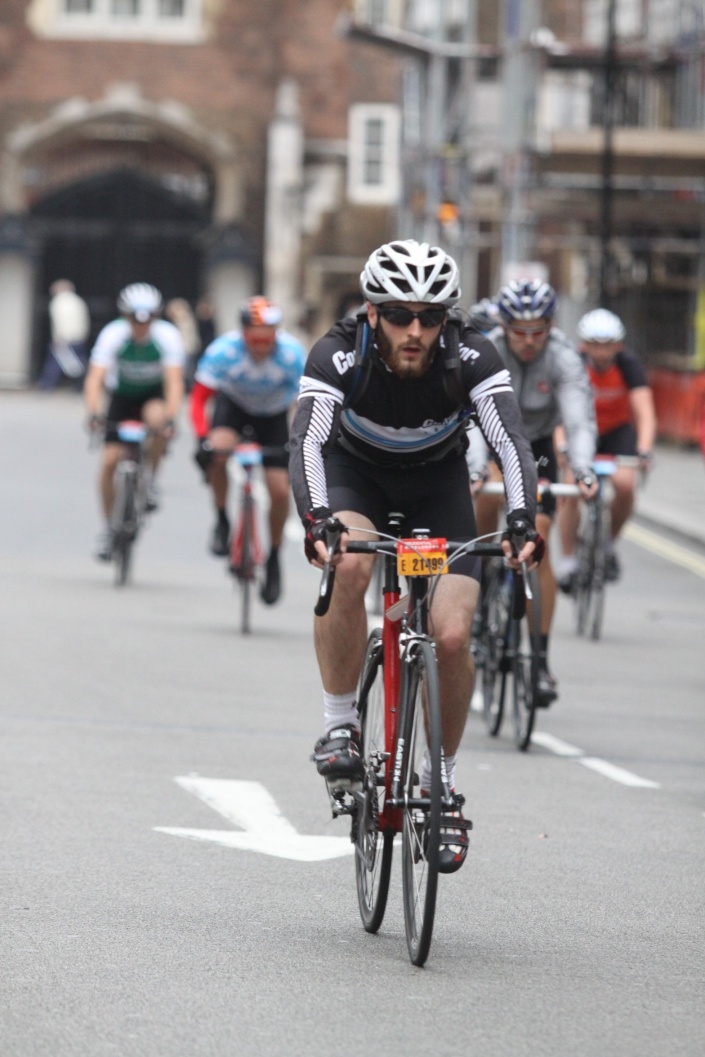
Here is a link to my GPS timings from the day

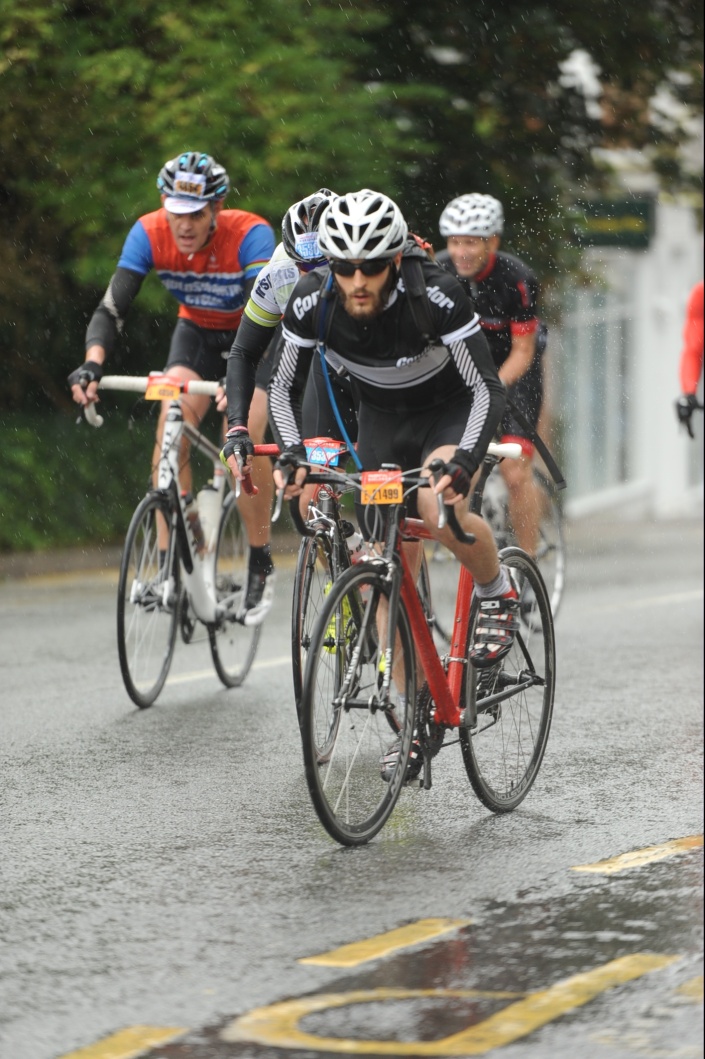
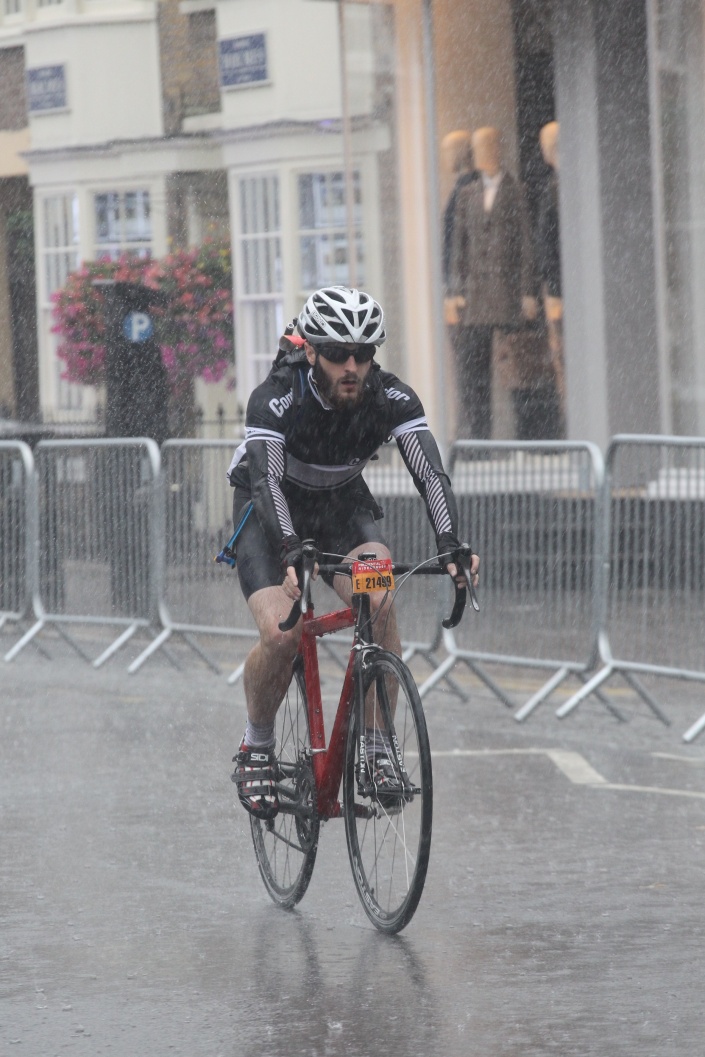
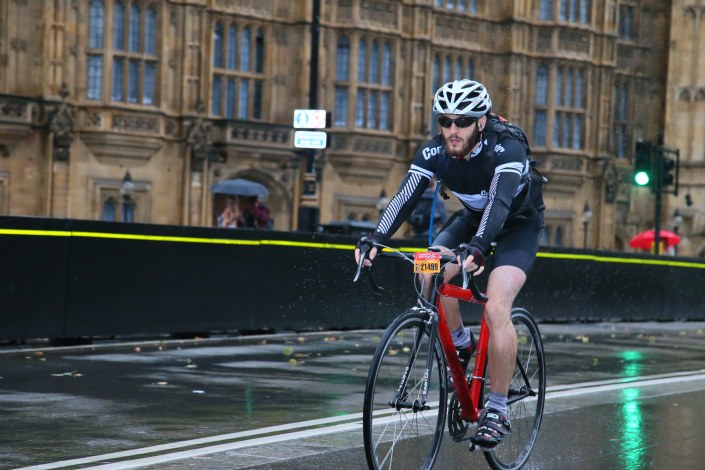


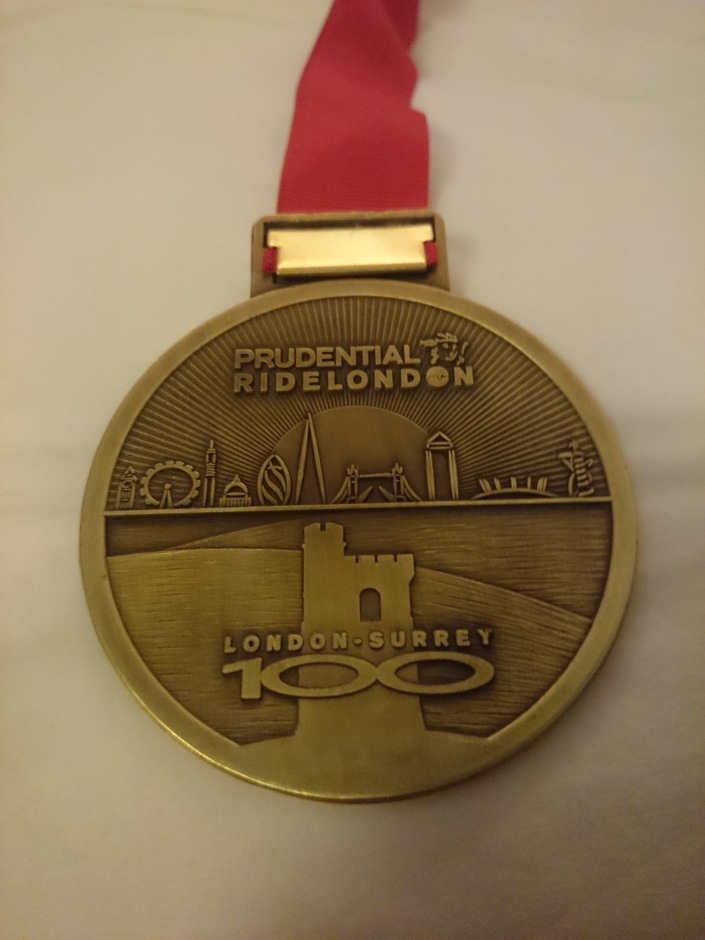
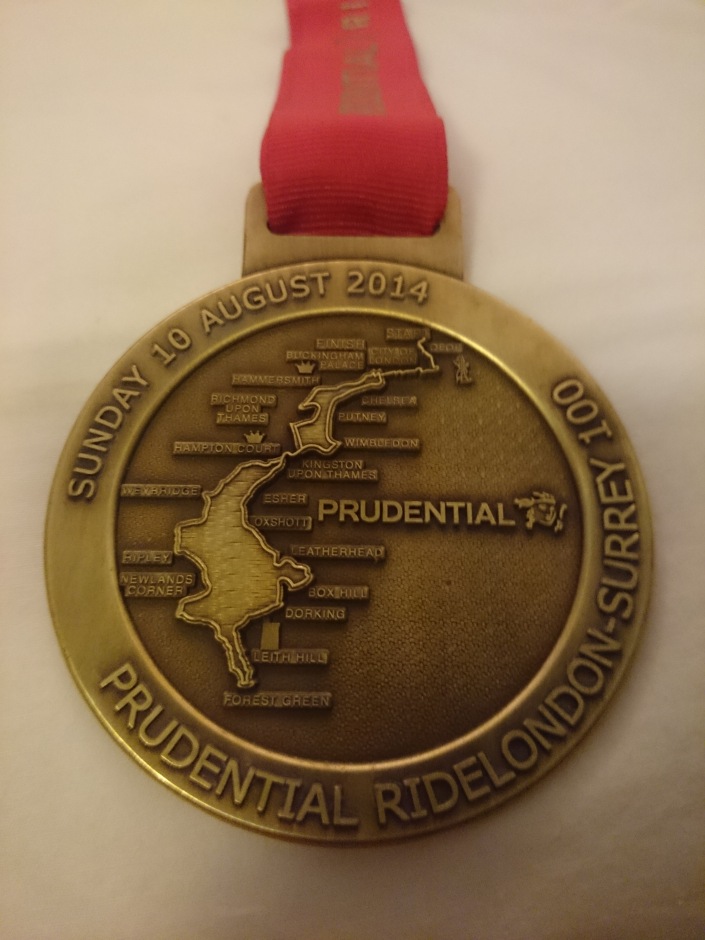
As I mentioned earlier, I did this ride for charity and am still trying to reach my target. Any donation is greatly appreciated, no matter the size – every little helps! Please donate through my VirginMoney page, thank you.
Why should non-cyclists support measures to boost cycling?
Video Posted on Updated on
This article (Kaya Burgess – The Times) describes the multifarious benefits of investment in cycling for all sorts of different groups in the UK. In what follows below, I intend to summaries and illustrate just a few of these benefits.
Motorists, for instance, would benefit from fewer traffic jams and less conflict with cyclists. Even Top Gear presenter and general motor-mouth Jeremy Clarkson has praised cycling as a way of getting around. He last year described Copenhagen’s cycling culture as “fan-bleeding-tastic” and said: “Now I know that sounds like the ninth circle of hell, but that’s because you live in Britain, where cars and bikes share the road space. This cannot and does not work. It’s like putting a dog and a cat in a cage and expecting them to get along. They won’t, and as a result London is currently hosting an undeclared war. I am constantly irritated by cyclists and I’m sure they’re constantly irritated by me.”
People who commute by train and by bus will also benefit if more people took up cycling, as the intense pressure on the public transport system would be eased.

As child obesity soars in the UK, parents and children will benefit from better infrastructure as cycling to school becomes an option again. The more people who cycle, the safer the streets become, and thus more people will be encouraged to take up cycling . With more than 2/3 of car journeys in the UK being less than 5 miles, most of the driving that people do is completely unnecessary anyway. The school run needn’t be the stress that it has become.
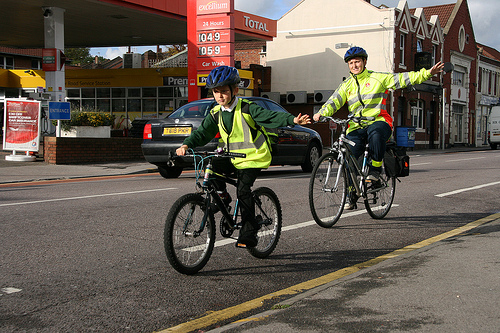
Ordinary adults will benefit from the regular exercise as well. Official advice recommends taking 150 minutes – or 2½ hours – of physical activity per week, but we do not always have the time – or inclination – to get down the gym or go for a jog after a long day or long week of work. Building cycling into a person’s daily routine is a brilliant way of nomalising the activity and incorporating exercise into their lifestyle.

Taxpayers will also benefit from investment in cycling. The NHS spends around £5 billion each year on tackling preventable diseases exacerbated by inactivity, including type 2 diabetes, heart disease and strokes. Around £16bn is currently being spent on the Crossrail project in London and a further £3bn on upgrades to the A9 road in Scotland. Health experts told the Get Britain Cycling inquiry that investing in cycle provision is by far the most cost-effective form of transport spend, recouping £4 in healthcare savings for every £1 invested.
Investing in cycling is also good for businesses and employers. Not only does a manager get a healthier and more alert workforce, but research in New York has shown that the introduction of cycle lanes led to a 49 per cent increase in retail sales. In terms of parking, bikes take up a lot less space than cars, so it follows that bikes can carry more potential customers than cars can.
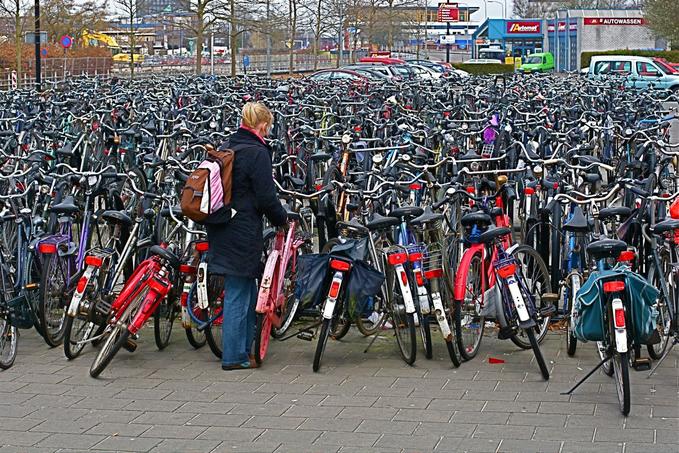
As a final point, the article notes that cyclists would also benefit from improved cycle infrastructure. It might seem like an obvious point, but around 2 per of traffic on Britain’s roads is made up by people on bikes, and as this figure grows the infrastructure will need to grow with it. For instance, of all vehicles crossing bridges over the River Thames in London at rush hour, more than half are bicycles – in spite of this fact the cycle lanes (which are shared and often blocked by buses) are at best only a third of a lane in width. It really is time the Government took cycling seriously.

I really liked this article, but it did miss out some other key groups who would benefit from a more Dutch-style cycling infrastructure, as illustrated in the following video:
Cycling is not (intrinsically) dangerous
2013 saw many articles written under titles referring to the ‘dangers of cycling’. A few random examples can be found here, here, here, and here. This one even talks about the ‘terrors’ faced by cyclists on the road.
Indeed, cycling can be a dangerous activity, but this is not because cycling itself is dangerous…
For instance, it isn’t dangerous to cycle without a helmet
It isn’t dangerous to cycle without hi-viz
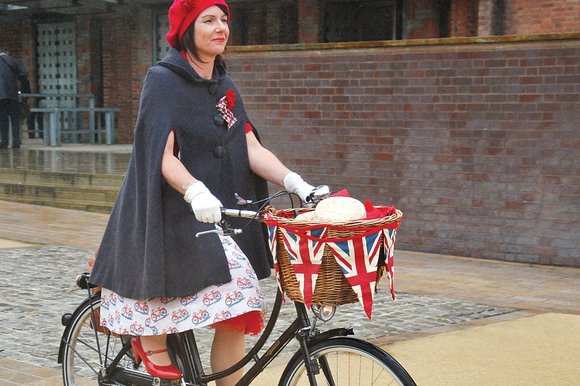
It isn’t dangerous to cycle with a passenger…
…no matter what age you are!
Even a couple of passengers (and a suitcase) is no big deal
Cycling with kids isn’t dangerous either
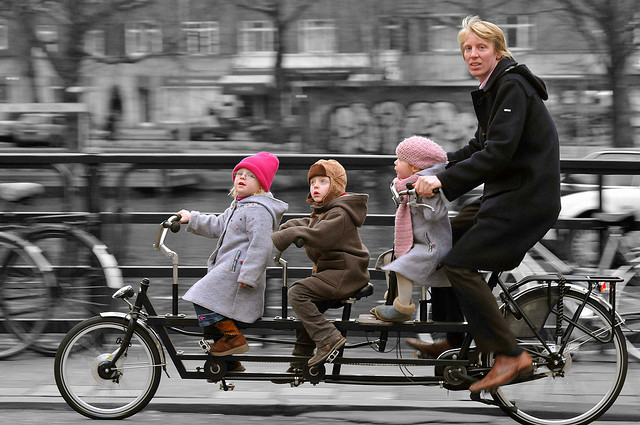
and it isn’t dangerous to cycle with an umbrella
It certainly isn’t dangerous to cycle next to your friends
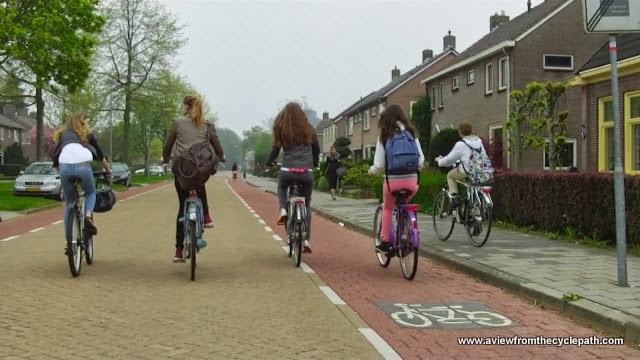
Even four-legged friends are safe to ride with.
Whether you’re a little bit older…

…or a little younger
…cycling itself is not a dangerous activity.
What these photographs illustrate is how the physical environment affects the relative danger of riding a bike. Many of the pictures also show how good infrastructure is the key factor in determining whether or not cycling is actually safe.
As we move into 2014, I am hopeful that governing bodies in the UK (and elsewhere, for that matter) pick up on the merits of cycling and do what is needed to protect people who ride bikes. At present (and from my perspective), city dwellers face an unappealing trilemma when deciding upon transportation; they can either:
1. Contribute to the city’s pollution and congestion by paying through the nose for a car (+driving licence/insurance/MOT/VED/petrol/parking etc.).
2. Pay to take crowded/crappy (and notoriously unreliable) public transport.
3. Ride a bike but risk their lives by sharing the road with heavy/powerful/fast moving motor vehicles.
If a person is able to ride a bike (i.e. if their health permits it), then it should be in everybody’s interest to support them. Biker riders take up less space on the roads, and so there is less congestion for everyone else; they are not pumping out pollution into the air that we all have to breath; they are exercising their bodies and so easing pressure on an NHS that is currently strained by an obesity epidemic; they aren’t damaging the roads to nearly the same degree that other vehicles do (thus saving tax-payers money); they don’t run people over (and if they do, injuries are usually minor); and last but not least, motor-vehicle dominated cities are noisy and unpleasant places, and so bikes offer a quiet and civilised remedy to this.
I think that cycling is brilliant, not just for the bike rider but for the world. I intend to keep up the pace this year with my campaigning, and I hope to keep you updated with any developments/innovations that might be of interest.
All the best
Government approves low-level lights to boost cyclists’ safety
Link Posted on Updated on
Government approves low-level lights to boost cyclists’ safety
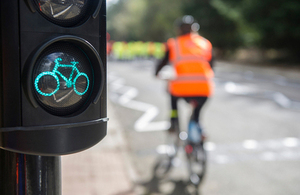
Transport Minister Stephen Hammond has announced that new low-level traffic lights for cyclists have been authorised for use following safety trials.
More than 80% of cyclists favoured the use of low-level signals during the track-based trials of the system, which works by repeating the signal displayed on main traffic lights at the eye level of cyclists.
The clearance means that Transport for London (TfL) can now install the lights at Bow Roundabout – the first time the lights have been used in the UK.
Initially the system will be piloted at Bow but the Department for Transport (DfT) is working with TfL to extend it to a further 11 sites in London.
The lights will give cyclists improved, clearer signals to ensure they have the information they need at the junction. Research is currently underway that will give DfT the evidence to consider approving the use of these lights to provide an “early start” for cyclists.
Leon Daniels, managing director of surface transport at TfL said:
“Low level cycle signals are common place in certain parts of Europe and we are keen to make them common place in London. These new signals, which will be a further improvement to the innovative traffic signals at Bow, will provide cyclists with a better eye-level view as to which stage the traffic signals are at.
Working closely with the Department for Transport, we will work to have these on-street during January 2014, and should the technology prove to be successful, further trials will be carried out across London throughout 2014.”
-
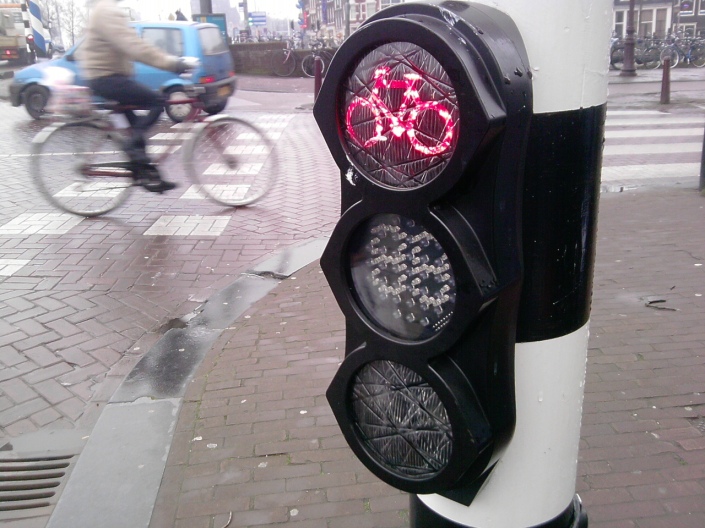
Bike-only traffic lights work so well in The Netherlands that most cyclists actually obey them! The reason why it is good to have separate lights for cyclists is that they can be used to give people on bikes a head start before the rest of the traffic.
The system that currently operates in the UK uses an ‘Advanced Stop Line‘ (ASL) which is also known as a ‘bike box’. The idea is that there is a designated area (usually painted red) at the head of the traffic queue into which bicycles can filter and then get ahead of motorised vehicles. The problem with this set up though is that the bike box is rarely respected and almost never enforced by traffic police. Motorists aren’t informed about the penalties of driving into this box under a red light, and so it is often ignored.
-
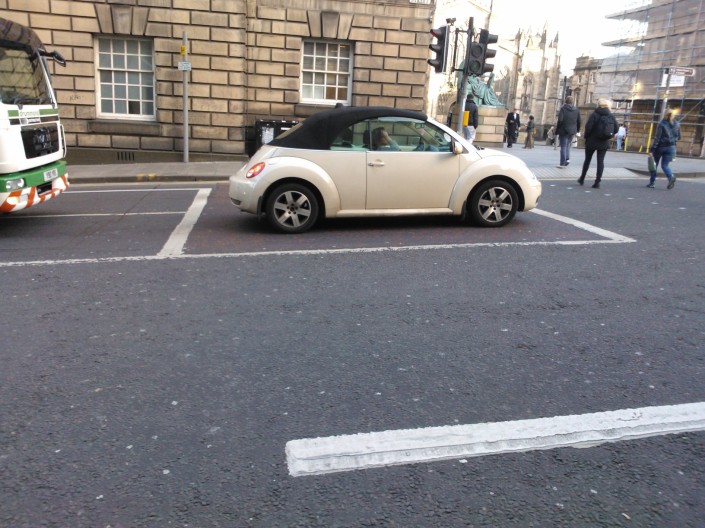
Driver inside an ASL, does she even know it’s there? In her defence, the ASL is such a rubbish attempt at cycling infrastructure that I’m hard;y surprised that it is ignored. 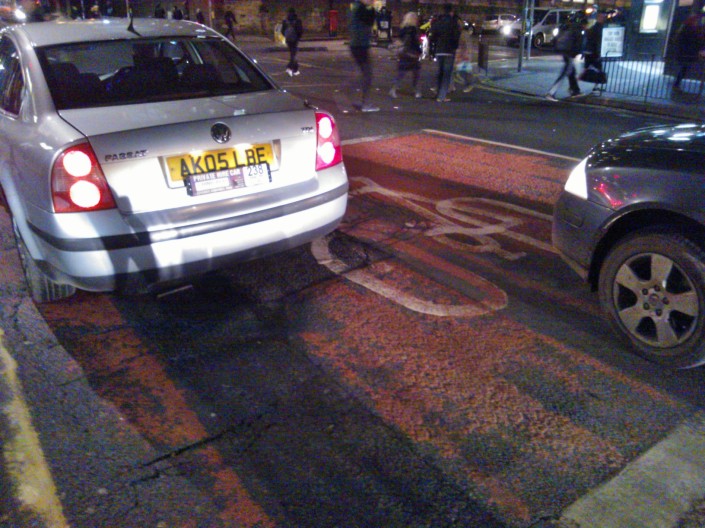
This City of Edinburgh minicab driver pulled in front of me and my girlfriend as we were waiting in the ASL. The car to the right of the picture takes a cue from the taxi driver and edges into the bike box as well. The fact that the box’s red paint has been eroded hardly helps.
Space for cycle lanes – it can be found!
Whenever I tell people about my dream of having some decent cycling infrastructure in the UK, I am frequently met with the same point about there not being enough space on British roads. The general feeling is that roads are already too narrow, and that there simply isn’t any room to accommodate the type of segregated cycle lanes that work so well on the continent.
In opposition to this, I would like to present you with a group of photos taken from Google Streetview. In the left column you have shots of roads/junctions in the UK, and in the right column you have almost identical shots of places in The Netherlands. The point of the side-by-side comparison is to show how space is used differently, and how the Dutch so sensibly choose to separate pedestrians and cyclists from cars and HGVs. The streets are so similar that they could almost be before and after photos…
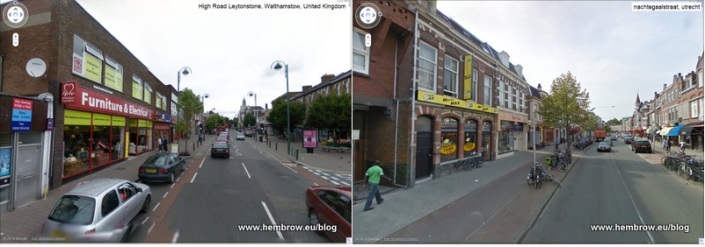
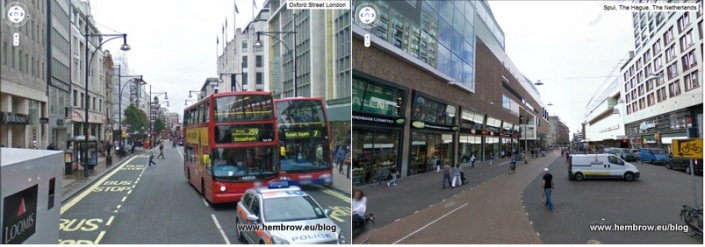
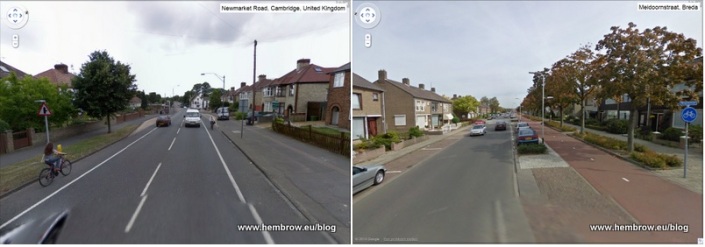
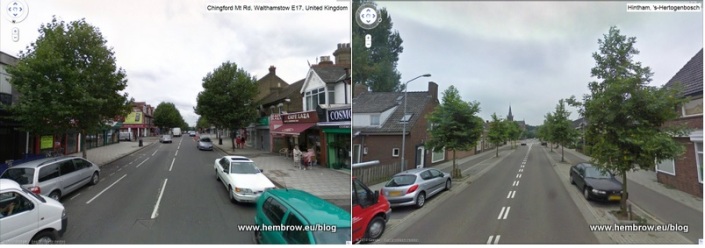
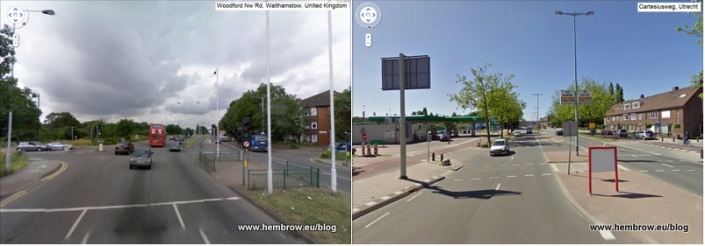
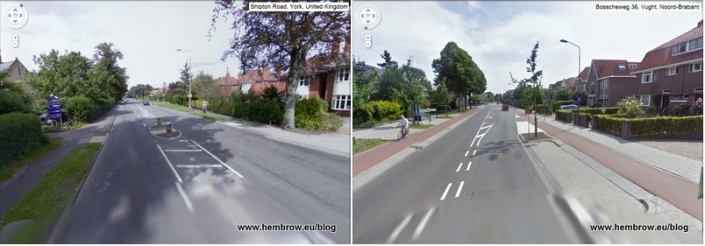
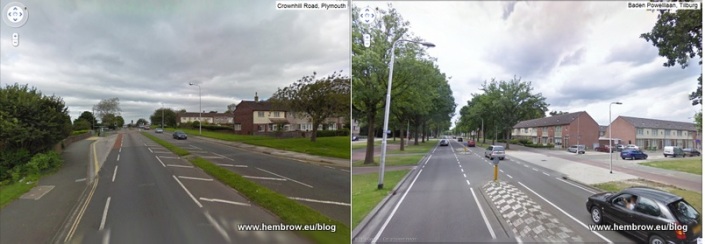
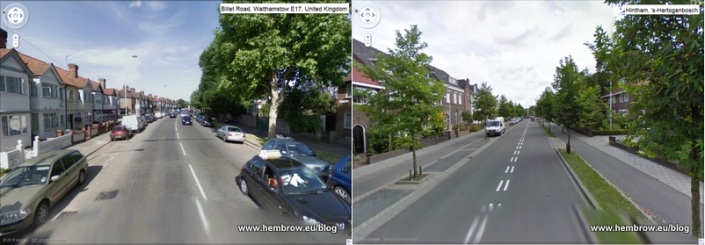
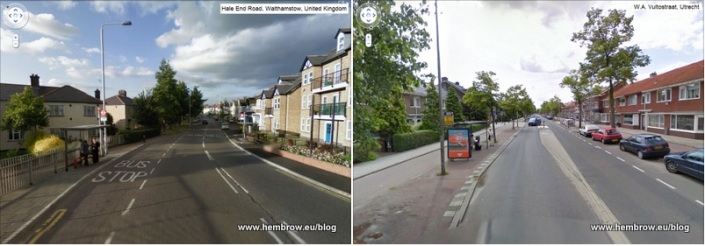

In each case, the cycling provision in the UK is rubbish or non-existent, while that provided on a similar street in The Netherlands offers a far superior cycling experience. Of course, if cycle lanes were better then more people would cycle, and if more people were riding bikes then there would be fewer cars on the road and so less congestion and less pollution. Everyone benefits, right?
The following video explains how the Dutch got their cycle paths, and how their cities made the transition from being car-centric to being more bicycle friendly.
What the Dutch have achieved is truly remarkable, and this is why I always hold them up as the best example for the UK to follow. They are the only country in the world able to boast the fact that more than a quarter of all their journeys are made by bike, and it would be my dream come true if we could achieve this feat in the UK.
Related articles
- Making cycle lanes safe (cyclingnelly.wordpress.com)
- Crosspost: Cyclists and pedestrians as ‘hazards’ for motorists. #wordlturnedupsidedown #takecaregtrmcr (manchesterclimatemonthly.net)
- No, it’s not the narrowest cycle path in Britain! (cyclingnelly.wordpress.com)
- Only 10 fines for illegal cycle lane parking (belfasttelegraph.co.uk)
Red Light Jumpers in London
Image Posted on Updated on
TfL gathered some data about red light jumping cyclists in London.
This data has been dug up from the 2012 archives possibly in response to the recent hidden-camera footage of cyclists jumping reds (http://www.standard.co.uk/news/london/cyclists-filmed-jumping-red-lights-in-london-taxi-drivers-hidden-camera-footage-8969043.html)
While heavily-edited footage gathered by disgruntled taxi drivers hardly constitutes scientific evidence, it remains true that cyclists in London need to clean up their act if they want to maintain the moral high ground and support their case for decent infrastructure.
The following video illustrates some related issues:
Related articles
- ‘More than half’ of cyclists jump red lights (london24.com)
- Cyclists caught jumping red lights in London taxi drivers’ hidden camera footage (standard.co.uk)
- London Cyclists stage mass ‘die-in’ (dutchbikeguy.wordpress.com)
London Cyclists stage mass ‘die-in’
Following the recent deaths on London’s busy streets, cyclists in the capital held a vigil and protest outside the headquarters of TfL (Transport for London). Despite the cold we lay down next to our bikes and made a pretty bold statement that TfL can no longer ignore.

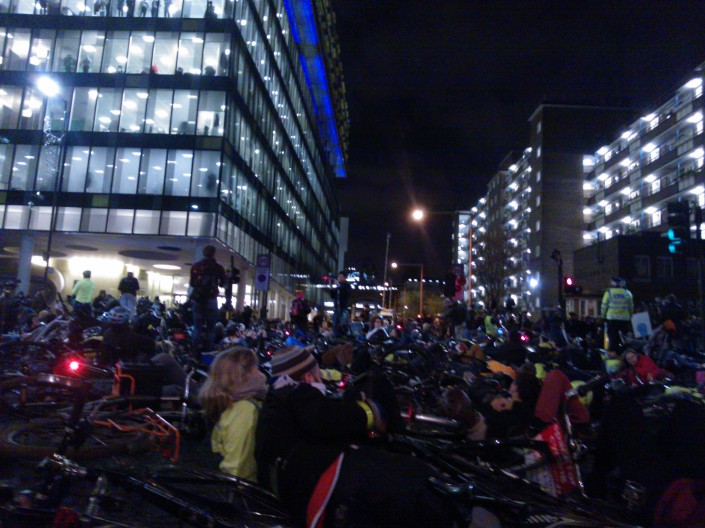
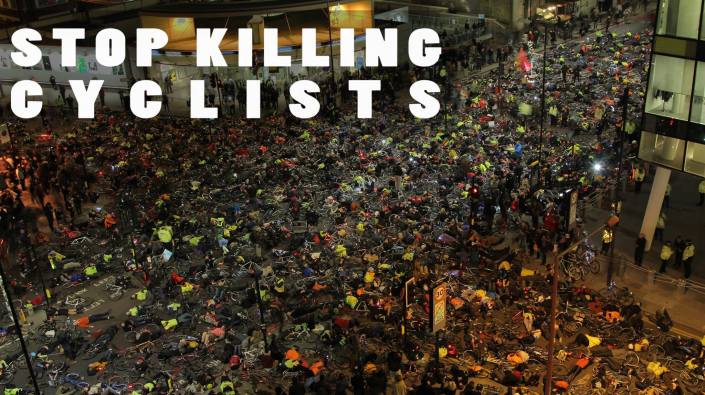
London’s die-in was reminiscent of the famous Dutch die-in that took place in the 1970s on the museumplein outside the Rijksmuseum.

The Dutch campaign was motivated by the number of people (particularly children) who were dying on the roads. Their protest achieved remarkable things in terms of their infrastructure, and 40 years down the line they are still reaping the benefits.
Dutch solutions to London’s problems aren’t really so radical, and their implementation would only requires a modest degree of commitment from the government.
Look at how they deal with HGVs and roundabouts – surely this sort of infrastructure is desirable for everyone, no?
On a side note, my sister was interviewed by the BBC during the protest, and her vox-pop even made it onto the evening news! I will try to upload a video, if I can find one…

And the BBCs coverage of the event (my sister at 1:04)…
and another one…
Related articles
- Cyclists lie outside Transport for London (TfL) headquarters to protest road deaths (express.co.uk)
- Thousands of cyclists lie down in the road for rush hour protest outside TfL’s Blackfriars HQ (standard.co.uk)
- http://www.huffingtonpost.co.uk/2013/11/29/stop-killing-cyclists_n_4361265.html?utm_hp_ref=uk
- http://www.bbc.co.uk/news/uk-england-london-25160874
- http://www.cyclingweekly.co.uk/news/latest/541453/cyclists-stage-mass-die-in-outside-transport-for-london-offices.html
London, Cargo Bikes, Police, and Perception
Link Posted on Updated on
London, Cargo Bikes, Police, and Perception
A father was recently pulled over by the police while trying to take his kids to school in a perfectly roadworthy cargo bike.
Even though the family had been travelling this way for four years, London’s Transport Police didn’t quite know what to make of it.
Admittedly, the daughters’ helmets aren’t fitted very well, and the roads in London are polluted and dangerous at the best of times, but I still see this man as a pioneer of a more sustainable transport movement.
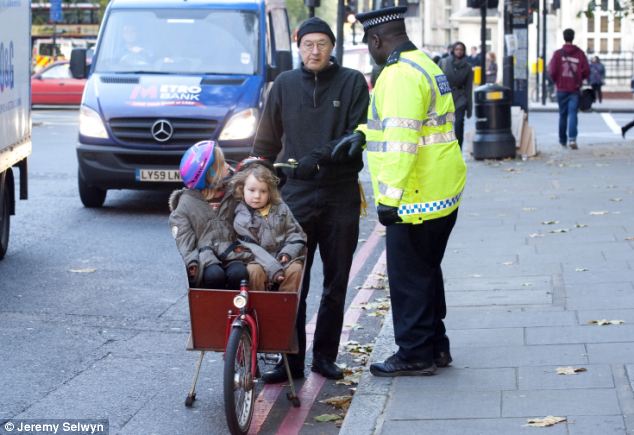
By referring to the Dutch cargo bike as a ‘rickety wheelbarrow bike’, the Daily Mail’s coverage of this incident is embarrassing because of its clear ignorance of Continental cycling culture.
The cargo bike is a brilliant and useful alternative to a car that is both cheap and environmentally friendly. Indeed, the cargo bike itself is not the problem in this situation, it is simply the poor cycling infrastructure and the speed + proximity of motor vehicles that make this man’s choice of transport questionable.
This story was also covered (more objectively) in the Evening Standard
Related articles
- Cargo bikes running around in my brain… (bikingchandler.wordpress.com)
- 10 Reasons why you will love a Bakfiets.nl cargo bike (urkaicommunity.wordpress.com)
Dutchman isn’t impressed by London’s cycling infrastructure
Video Posted on Updated on
A brief analysis of cycling conditions in London from David Hembrow.
As a Dutchman, Hembrow highlights the shortcomings of British infrastructure that we have to live with. He makes the point that not only are the roads inadequate for cyclists, but that they aren’t really serving motorists much better either.
More than anything else, the thing that really struck me about this video was the shear volume of noise coming from the road. Motor vehicles make the urban environment a really unpleasant place to be.
Another video that focuses specifically on the shortcomings of London’s CS2 can be found here
Related articles
- London’s ‘cycling superhighways’ are ideal … for kamikazes | Charles Montgomery (theguardian.com)
- Cycle deaths leave London bewildered (bbc.co.uk)
- Upgrade London’s CS2 to Continental Standards – call to arms (dutchbikeguy.wordpress.com)

